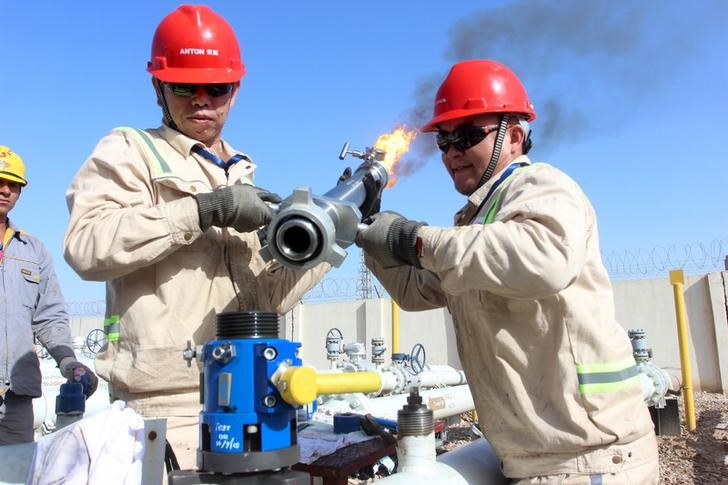By Peter Nurse
Investing.com -- Crude oil prices pushed higher Thursday, climbing to two-week highs amid signs of a U.S. economy continuing to recover while inventories in the world’s largest consumer fell once more.
New York-traded West Texas Intermediate crude, the benchmark for U.S. oil, settled up $1.23, or 1.7%, at $73.62 per barrel.
London-traded Brent, the global benchmark for oil, finished the session up $1.31, or 1.8%, at $76.05.
Economic data released earlier Thursday showed U.S. gross domestic product increased at a 6.5% annualized rate in the last quarter, as its vaccination program prompted additional spending on travel-related services. Although this was less than the 8.5% expected, it still represented a step up from the revised 6.3% rate in the first quarter.
The International Monetary Fund on Tuesday boosted its growth forecast for the United States to 7.0% in 2021, up from its 6.4% forecast in April, which would represent the strongest performance since 1984.
The report from the U.S. Energy Information Administration on Wednesday was also constructive, with crude inventories dropping by over 4 million barrels last week, falling to their lowest level since January 2020 and resuming their downward trend after last week’s surprise build.
Additionally, Royal Dutch Shell (LON:RDSa), Europe’s largest oil and gas producer, and TotalEnergies (PA:TTEF) both announced plans to return significant returns to their shareholders, indicating confidence that they can maintain the current substantial profits while also suggesting that they will see little need to increase output in the coming months.
Finally, the Wall Street Journal reported that the U.S. is planning a sanctions campaign against what they see as Iran’s improving capabilities for precision strikes using drones and guided missiles.
This suggests that getting Iran back into a nuclear deal and thus the lifting of sanctions against the Persian Gulf country's crude exports will be difficult to achieve, meaning that this source of supply is unlikely to return to the world market as quickly as had been seen a month ago.
“The unknown is whether the incoming president takes the same approach towards trying to reach a deal with the U.S., or if he takes a more hardline stance,” said analysts at ING, in a note.
“What is clear, is that it is taking longer than initially expected to reach a deal, and so as a result the expected increase in Iranian oil supply over 2H21 is likely to be delayed.”
